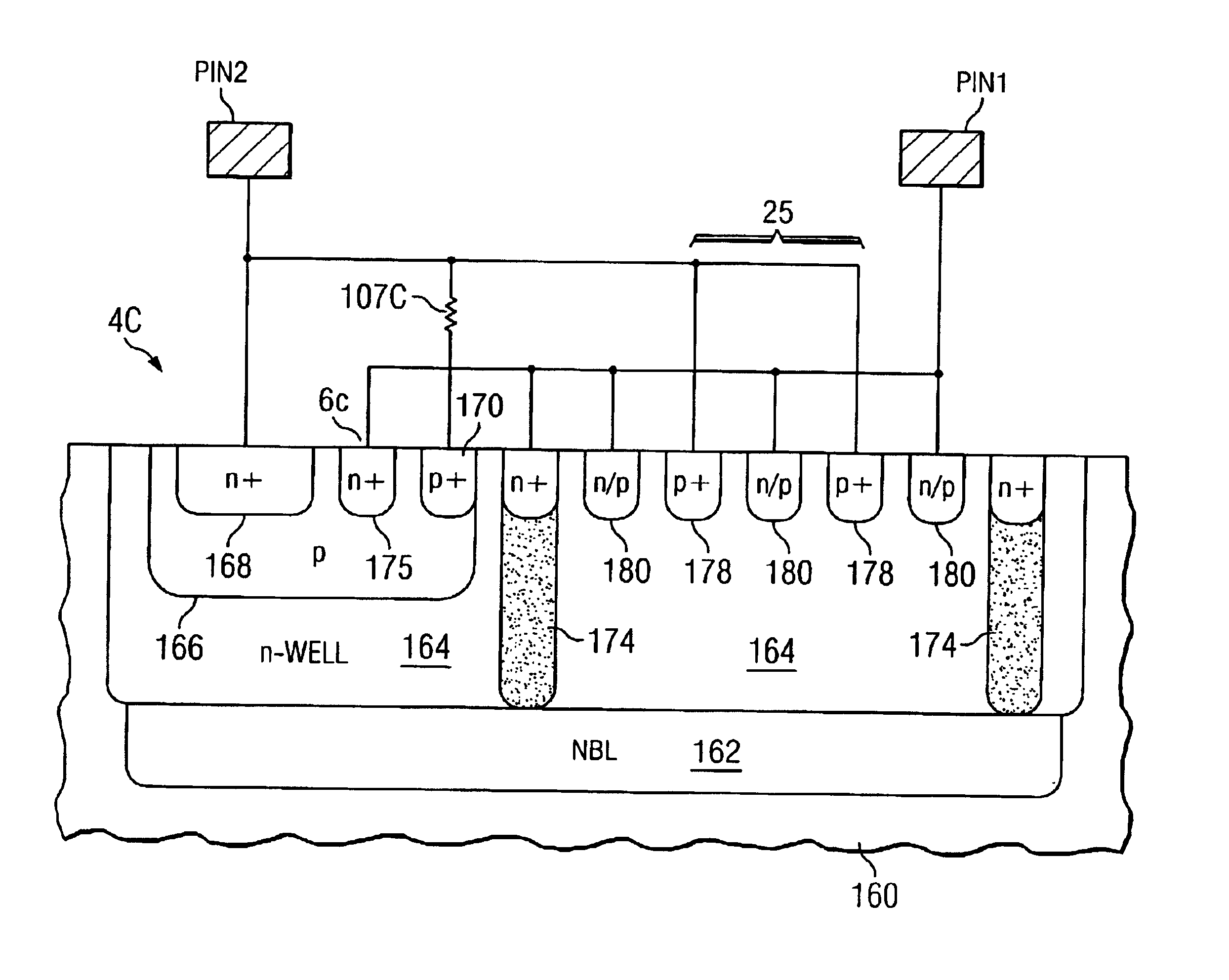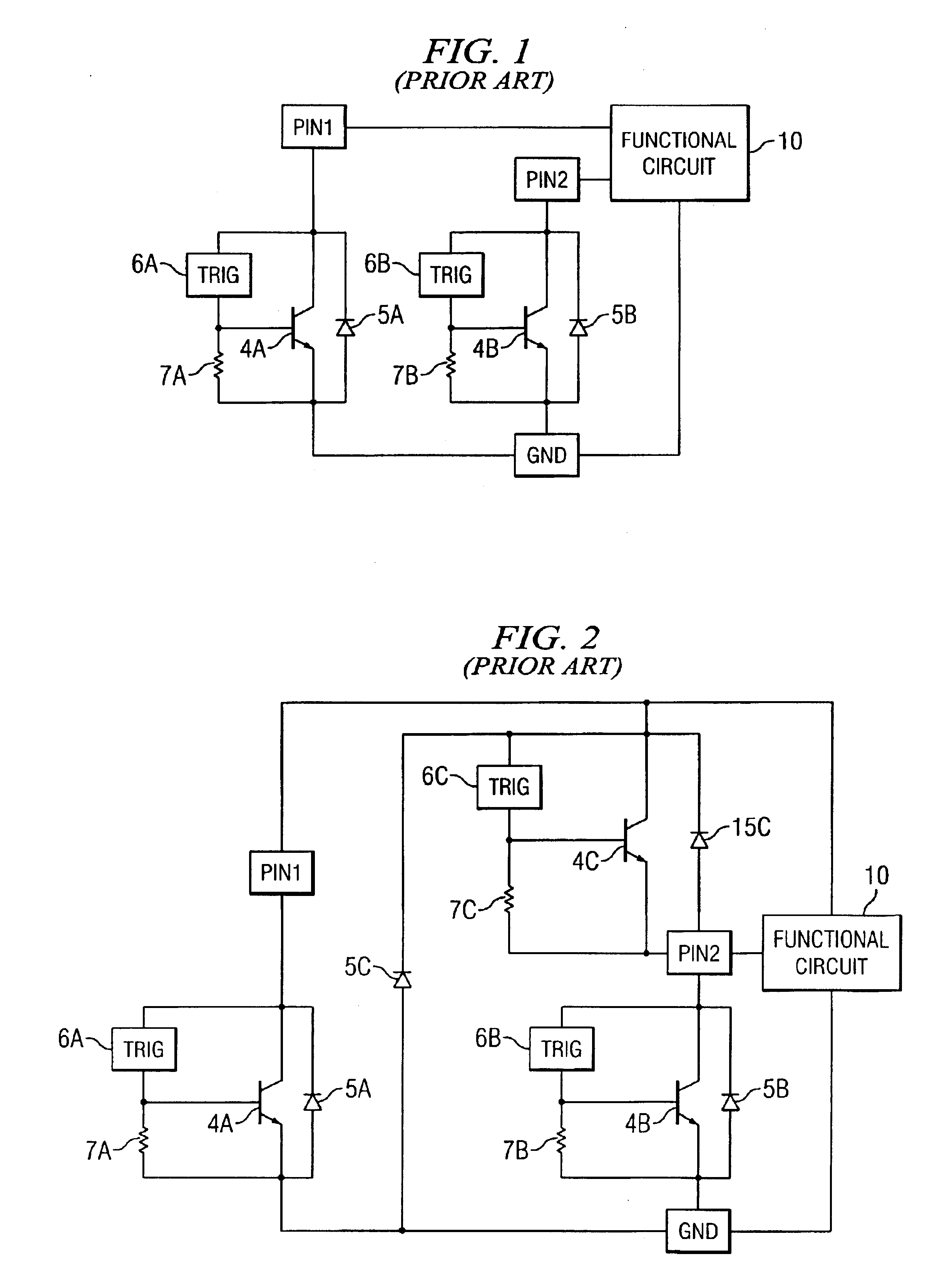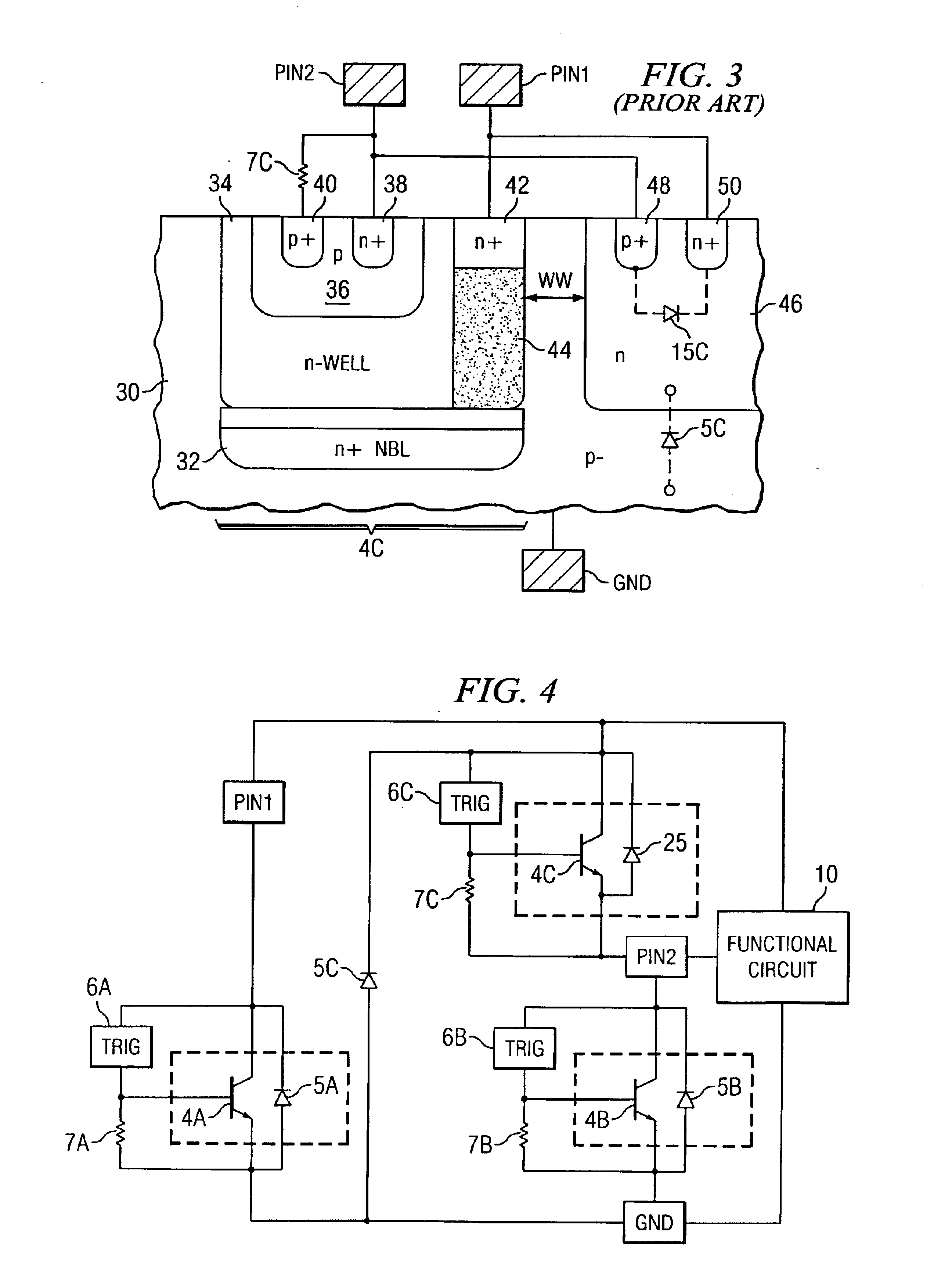Efficient protection structure for reverse pin-to-pin electrostatic discharge
a protection structure and reverse pin technology, applied in the field of semiconductor integrated circuits, can solve the problems of esd damage, modern high-density integrated circuits are known to be vulnerable to damage,
- Summary
- Abstract
- Description
- Claims
- Application Information
AI Technical Summary
Benefits of technology
Problems solved by technology
Method used
Image
Examples
Embodiment Construction
[0033]The present invention will be described in connection with its preferred embodiments, and specifically in connection with an example of this preferred embodiment of the invention involving an integrated circuit constructed according to a conventional bipolar and complementary metal-oxide-semiconductor (BiCMOS) technology. It is to be understood that this description is provided by way of example only, and is not to unduly limit the true scope of this invention as claimed.
[0034]FIG. 4 illustrates, by way of an electrical schematic, an example of an integrated circuit incorporating an ESD protection circuit according to the preferred embodiment of the invention. It is contemplated that the integrated circuit of FIG. 4 is a single-“chip” integrated circuit, in which the elements shown in FIG. 4 are all realized on the same integrated circuit device. This integrated circuit thus has a plurality of terminals for making connection to circuitry external to the integrated circuit; it ...
PUM
 Login to view more
Login to view more Abstract
Description
Claims
Application Information
 Login to view more
Login to view more - R&D Engineer
- R&D Manager
- IP Professional
- Industry Leading Data Capabilities
- Powerful AI technology
- Patent DNA Extraction
Browse by: Latest US Patents, China's latest patents, Technical Efficacy Thesaurus, Application Domain, Technology Topic.
© 2024 PatSnap. All rights reserved.Legal|Privacy policy|Modern Slavery Act Transparency Statement|Sitemap



